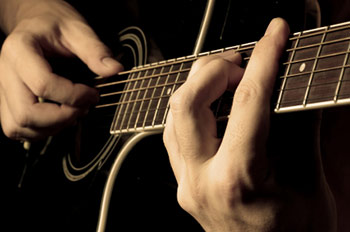
If you’re going to play guitar you might as well play loud, right?
Mastering heavy metal guitar is a highly admirable trait especially if you are a younger guiartist. Heavy metal is not the most strict genre in terms of having a lot of rules, but you need to make sure it’s loud and you need to play it fast. Consequently, heavy metal guitar is very demanding because the guitarist is often moving at a very quick rate.
Do you dream of mastering heavy metal guitar?
Let’s start with a little background. Heavy metal is a sub-genre of rock music. Metal first became big in the late-1960s and early 70s largely in the United Kingdom and United States. Heavy metal has roots in blues rock and psychedelic rock but is characteristically thicker sonically. The genre is also symmonious with amplified distortion, emphatic beats and a guitartist’s paradise — extended guitar solos.
Legendary bands like Led Zeppelin, Black Sabbath and Deep Purple are all associated with metal though the genre really came into its own when Judas Priest dropped a lot of the blues influence and made metal what it is today. Other pioneers in metal music include Motorhead and Iron Maiden.
Today, heavy metal is generally divided into two categories — the more popular, commercial-friendly metal (e.g. Metallica) and the more extreme/aggressive underground scene (Mastadon, Rammstein & Lamb of God). Unlike other genres, “metalheads” are usually pretty picky about what is classified as metal and what does not deserve to be associated with the genre. This could be related to the large number of heavy metal side-genres including thrash metal, death metal, black metal, nu metal, metalcore, extreme metal and hardcore punk.
The keys to becoming a heavy metal guitar master include:
- Proper Tuning
- Powerchords
- Palm Muting
- Hard Hitting Riffs
- Fast Solos
Heavy metal music involves a lot of distortion and fast fingering making the genre a difficult one for beginners. If you just started picking up the guitar it’s important to begin with some basics (even if you’re ultimate goal is to play metal) because the genre is not terribly easy to master.

When you play heavy metal you need the proper tuning. Traditional tuning for heavy metal guitar include:
- Drop C
- Drop B
- Normal tuning down a tone
NOTE: Tuning with an electronic tuner is recommended because these tuning styles are difficult to get by “ear”.

Heavy metal sounds the best with a TON of distortion. Therefore, it’s important to have a powerful amp because cheaper amplifers will probably not provide enough “juice” to really capture the meaty and raw sound of metal music.
The general formula for heavy metal features the use of heavy powerchords (traditionally during the verse, bridge and chorus) with a lot of open soloing. When you’re not soloing you’re probably playing powerchords. The good thing about powerchords is that they are easy to play. However, they will not get the effect you need unless you have a quality amp with lots of distortion.
Palm muting is a very important technique to learn if you want to master heavy metal guitar. In order to palm mute you must place your palm near the bridge. “Light palm muting” is when you slightly touch the stings while “Heavy palm muting” is, you guessed it, with much more pressure.
The vast majority of guitarists who want to play heavy metal do so because they are drawn to the intense solos of the genre. Can you really blame them? In order to do fast solos you obviously need fast fingers. You will develop speed picking and apreggios over years of practice. Be patient!
Along with all of the above tools, hammer-ons and pull-offs are both used heavily in heavy metal. The more practice with these two techniques the stronger your heavy metal skills.
If you are a beginner who loves heavy metal do not get frustrated. You will master heavy metal guitar before long. Like a lot of genres, heavy metal takes some time to learn, it’s heavily (no pun intended) recommended that you learn guitar basics first and invest in the proper equipment to really get that sound you need. It will not happen overnight but the avenue to becoming the next heavy metal guitar legend is only a few years of practice away!





